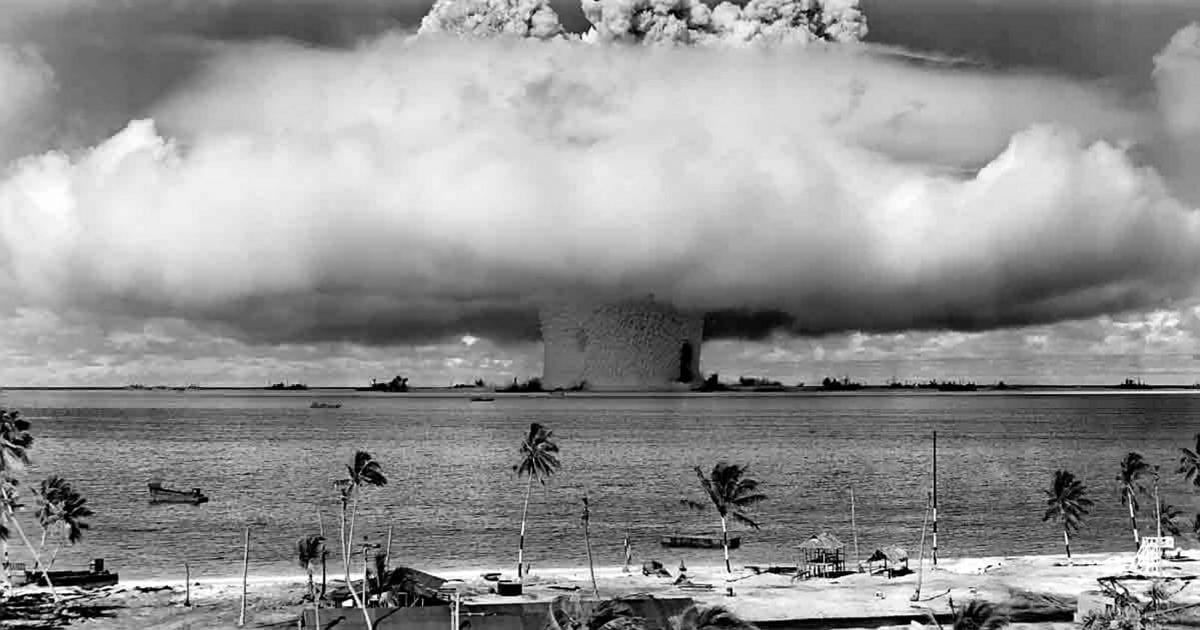Coral exposed to radioactivity from nuclear bomb testing could hold the key to a cure for cancer, according to new research.
The marine invertebrate at the bottom of the ocean floor has remarkable resistance to radiation exposure, say scientists.
Now scientists hope to harness its innate gift in a bid to develop new therapies for humans.
They are exploring how corals, which grow for centuries without developing cancer, have recolonised Bikini Atoll.
The ring of sand in the Pacific Ocean was subjected to nuclear bomb tests more than 70 years ago, yet the corals have adapted to persistent radiation.
The nine year battery began just after the Second World War left a legacy of radioactivity in the region, but long term exposure has left corals unharmed.
Marine biologist Professor Stephen Palumbi said: “The terrible history of Bikini Atoll is an ironic setting for research that might help people live longer.
“By understanding how corals could have recolonised the radiation-filled bomb craters, maybe we can discover something new about keeping DNA intact.”
Humans and many other animals exposed to radiation often develop DNA mutations in fast dividing tissues that can result in cancer.
Yet somehow, fast growing coral in Bikini Atoll appear to have been unaffected by the high levels of radiation found there.
Prof Palumbi and biology graduate student Elora Lopez plan to shed fresh light on how the coral colonies withstand the high levels of radiation by sequencing their DNA and measuring rates and patterns of mutations.
They looked at the historic fallout of 23 atomic bomb tests in the most northern of the Marshall Islands, located roughly halfway between Hawaii and Japan.
The blasts, detonated between 1946 and 1954, exposed corals and other species to persistent, high levels of radioactivity.
For their research, Prof Palumbi and Ms Lopez dived in a hydrogen bomb crater, chasing radioactive crabs, sampling giant corals and witnessing mutant sharks apparently missing their second dorsal fin.
Beyond coral, the researchers aim to understand how Bikini’s larger ecosystem continues to thrive in terms of biodiversity and to expose any hidden genetic damage.
To that end project leader Ms Lopez decided to also look at platter-size crabs that eat coconuts filled with a radioactive isotope from groundwater.
It is a mystery how the crabs survive, grow and reproduce with such a burden of radioactivity.
To answer their questions about radiation’s genetic impacts, Ms Lopez and Prof Palumbi will also compare their species samples with specimens collected on Bikini by US scientists just before the atomic tests.
Added Ms Lopez: “We should never forget what we did to Bikini Atoll and its people.
“We should learn everything we can from it, even things we would have never have thought of before.”
Part of the intense cold war nuclear arms race, the 15-megatonne Bravo test on 1 March 1954 was a thousand times more powerful than the atomic bomb dropped on Hiroshima. It exposed thousands in the surrounding area to radioactive fallout.
Bikini islanders and their descendants have lived in exile since they were moved for the first weapons tests in 1946.
When US government scientists declared Bikini safe for resettlement some residents were allowed to return in the early 1970s.
But they were removed again in 1978 after ingesting high levels of radiation from eating foods grown on the former nuclear test site.
The Marshall Islands Nuclear Claims Tribunal awarded more than $2bn in personal injury and land damage claims arising from the nuclear tests but stopped paying after a compensation fund was exhausted.
Previous research has also shown coral has a natural defence against the sun’s harmful ultraviolet rays.
It has led to a sunscreen pill for humans being considered based on its properties.
Corals are classified as animals because they do not make their own food, as plants do, but have tiny, tentacle-like arms they use to capture nutrients from the water and sweep into their inscrutable mouths.
It is the plant like organisms living in their tissues that form the spectacular reefs for which they are most famous.

